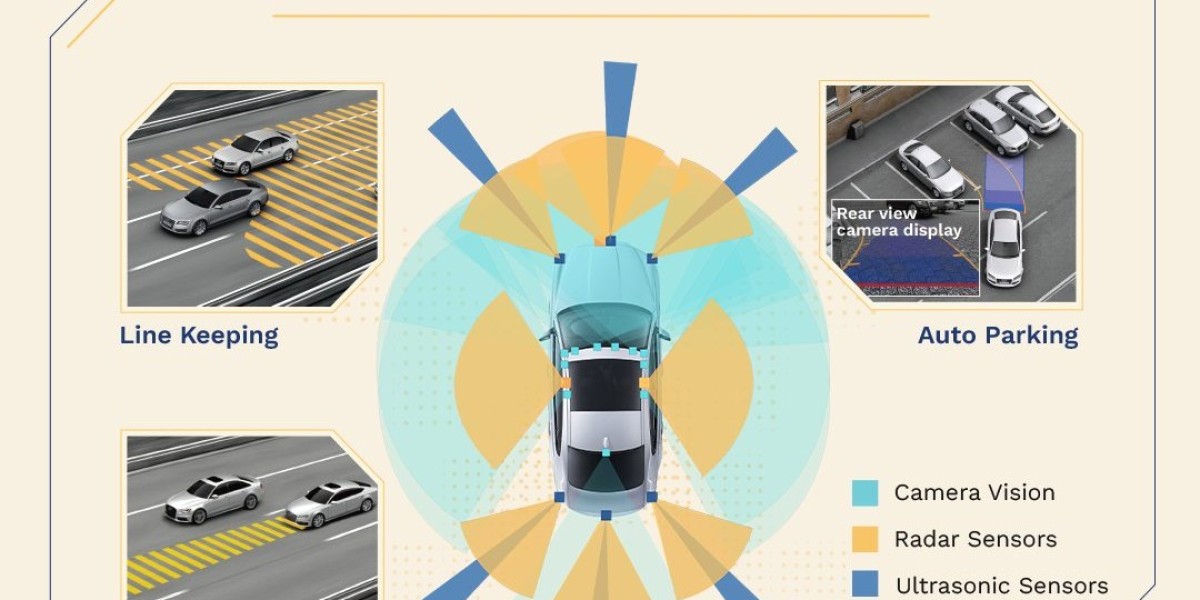The dream of self-driving vehicles is no longer a concept of the future—it is becoming a reality today. At the core of this innovation is the Autonomous Vehicle Control System, a sophisticated network of sensors, algorithms, hardware, and software that enables a vehicle to navigate without human intervention. As technology advances, these systems continue to evolve, promising a future of safer, more efficient, and smarter transportation.
What is an Autonomous Vehicle Control System?
An Autonomous Vehicle Control System is the brain that governs all operations of a self-driving vehicle. It gathers data from various sensors, processes that information, and makes real-time decisions to control the vehicle's speed, steering, braking, and path planning. The goal is to enable safe and reliable driving in dynamic and unpredictable environments, without human input.
Such systems must perform complex tasks like detecting obstacles, interpreting traffic signals, predicting the behavior of pedestrians and other vehicles, and responding appropriately—all while ensuring passenger safety and comfort.
Key Components of an Autonomous Vehicle Control System
Several integrated technologies work together to make autonomous driving possible:
1. Sensors
Sensors collect critical information about the environment. Key types include:
LiDAR (Light Detection and Ranging): Measures distance to objects by using laser pulses.
Radar: Detects objects' speed and distance, particularly useful in poor weather conditions.
Cameras: Provide visual data for lane detection, sign recognition, and obstacle identification.
Ultrasonic Sensors: Used for close-range detection during parking and maneuvering.
GPS and IMU (Inertial Measurement Unit): Help with precise localization and navigation.
2. Perception Systems
These systems process raw sensor data to build a comprehensive view of the vehicle's surroundings. They identify lanes, traffic lights, pedestrians, other vehicles, road signs, and obstacles.
3. Decision-Making Algorithms
Decision-making software interprets the perceived environment to make driving decisions. It selects safe speeds, chooses routes, avoids collisions, and adheres to traffic laws.
4. Path Planning and Control
Path planning software generates a safe trajectory for the vehicle to follow. Control systems then translate the planned path into steering, acceleration, and braking commands to drive the vehicle accurately.
5. Vehicle Actuation Systems
The control system must interface with mechanical actuators that control steering, throttle, brakes, and transmission to execute driving commands.
Levels of Autonomy
The Society of Automotive Engineers (SAE) defines six levels of driving automation, from Level 0 (no automation) to Level 5 (full automation). Most modern autonomous vehicles currently operate at Levels 2 or 3, where the vehicle handles some driving tasks, but human intervention is still required in specific situations. Level 5 autonomy envisions vehicles that require no human input under any conditions.
How Autonomous Vehicle Control Systems Work
The functioning of an autonomous vehicle control system can be broken down into several key steps:
Sensing: Continuously gather environmental data using a combination of cameras, radar, LiDAR, and ultrasonic sensors.
Perception: Fuse and interpret sensor data to create a detailed map of the surroundings, identifying objects, road features, and dynamic elements.
Localization: Determine the vehicle’s precise position within the mapped environment using GPS, IMUs, and sensor data fusion.
Path Planning: Calculate the optimal route and predict the movement of other objects to plan safe and efficient maneuvers.
Control Execution: Send commands to the vehicle’s actuators to adjust steering, acceleration, and braking based on the planned path and real-time conditions.
Continuous Feedback: Monitor and update plans in real-time, reacting to unexpected changes like sudden obstacles or traffic jams.
Applications of Autonomous Vehicle Control Systems
Passenger Vehicles
Autonomous cars aim to reduce accidents, improve traffic flow, and offer convenient transportation, especially for those unable to drive.
Commercial Transportation
Self-driving trucks are set to revolutionize freight logistics by reducing costs, improving delivery times, and mitigating driver shortages.
Public Transit
Autonomous buses and shuttles can enhance urban mobility, offering efficient, safe, and flexible transportation for commuters.
Agricultural and Industrial Vehicles
Autonomous tractors and mining trucks boost efficiency and safety in agriculture and heavy industries.
Benefits of Autonomous Vehicle Control Systems
Safety Improvement: Autonomous vehicles aim to eliminate human error, the leading cause of accidents.
Increased Efficiency: Optimized driving patterns can reduce fuel consumption and traffic congestion.
Enhanced Mobility: Autonomous vehicles can offer new transportation options for elderly and disabled individuals.
Economic Advantages: Self-driving technology can lower costs associated with logistics, deliveries, and fleet operations.
Environmental Benefits: Smarter driving can lead to reduced emissions and better fuel economy.
Challenges in Developing Autonomous Vehicle Control Systems
Despite rapid advancements, several hurdles remain:
Technical Complexity: Perfecting real-time decision-making under diverse and unpredictable conditions is extremely challenging.
Safety and Reliability: Autonomous systems must be nearly flawless to gain public trust.
Regulatory Hurdles: Establishing consistent regulations and standards across regions is critical.
Ethical Considerations: Programming ethical decision-making into machines—such as in unavoidable accident scenarios—is a significant challenge.
Cybersecurity Risks: Protecting vehicles from hacking and malicious attacks is crucial for user safety.
The Future of Autonomous Vehicle Control Systems
The journey towards fully autonomous vehicles continues to advance. Emerging technologies like Artificial Intelligence (AI), Machine Learning (ML), and 5G connectivity are enhancing the capabilities of control systems. Future autonomous vehicles will not only navigate more complex environments but also communicate with each other and the infrastructure (Vehicle-to-Everything, V2X communication), further improving safety and efficiency.
Furthermore, companies are investing in simulation technologies to train and validate autonomous control systems under millions of virtual miles, accelerating development without real-world risks.
As the technology matures, autonomous vehicles will become more commonplace, fundamentally reshaping transportation, cities, and the way we live.
Conclusion
Autonomous Vehicle Control Systems by Servotechinc represent the cutting edge of engineering innovation, blending sensing, computing, control, and artificial intelligence into seamless, intelligent mobility solutions. While challenges remain, the potential benefits for safety, efficiency, and accessibility are profound. As these systems continue to evolve, they will pave the way toward a smarter, safer, and more connected world of transportation.








